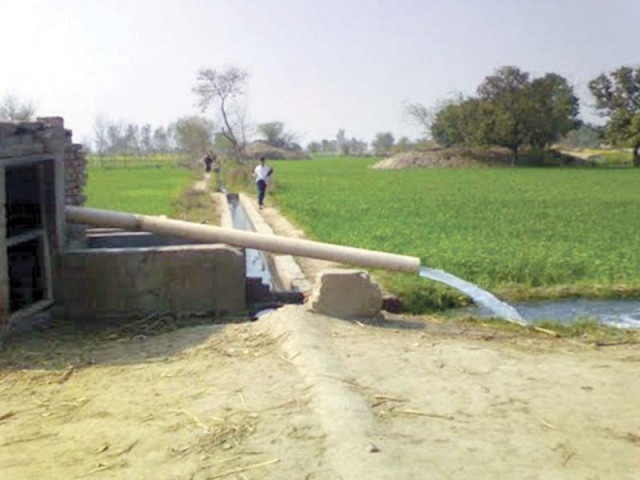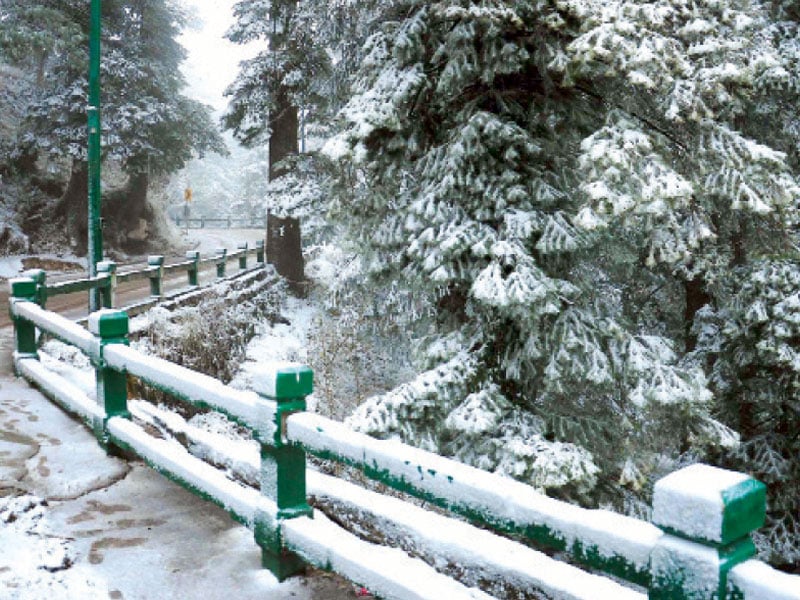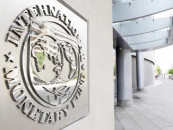Groundwater levels in freefall across Pakistan
Silent descent marks Pakistan’s transformation from a water-stressed land to one on the brink of water scarcity

Experts fear the land in Pakistan is running dry as the country’s per capita water availability has plunged from about 5,000 cubic meters at the time of independence to less than 1,000 today. This silent descent marks its shift from a water-stressed to a water-scarce nation, where the relentless thirst for groundwater outpaces nature’s power to restore it.
This warning came during a seminar titled 'Pakistan’s Groundwater Crisis: Policy Lessons and a Framework for Sustainable Resource Use'. The seminar was organised by the Pakistan Institute of Development Economics (PIDE) in collaboration with the Planning Commission’s RASTA initiative.
The session featured Nazam Maqbool, Social Scientist and Project Manager at RASTA, as the keynote speaker, and was moderated by Dr. Muhammad Faisal Ali, Research Fellow at PIDE.
Dr Faisal Ali underscored Pakistan’s rapid and troubling journey from a water-stressed to a water-scarce country. “Per capita water availability has dropped from over 5,000 cubic meters in 1947 to less than 1,000 today,” he said. “While the public debate often centres on surface water and climate change, the depletion of groundwater — Pakistan’s silent lifeline — remains dangerously neglected.”
Read: New face-less e-ticketing system issues fine to Karachi Traffic DIG's vehicle
He warned that water forms the foundation of civilization and food security, and its mismanagement threatens both human and economic survival.
In his presentation, Maqbool described Pakistan as one of the most arid countries in the world, receiving only 494 millimeters of rainfall annually. “The Indus River system provides nearly 96 per cent of our total water supply, with 78 per cent originating outside Pakistan’s borders,” he noted.
He pointed out that Pakistan holds the world’s fourth-largest aquifer and is also the fourth-largest groundwater user globally. The Indus Plain alone stores nearly 400 million acre-feet of freshwater — about eighty times the combined capacity of all major dams. Yet, the country extracts around 65 cubic kilometers of groundwater annually, far exceeding its natural recharge rate of 55 cubic kilometers.
Tracing the evolution of groundwater use, Maqbool explained that canal construction between 1870 and 1930 under colonial rule caused widespread waterlogging and salinity. To counter this, the 1960s Salinity Control and Reclamation Project led to the installation of thousands of tubewells.
“What began as a reclamation effort has today turned into overextraction,” he observed. “Electricity subsidies and drought-driven policies have encouraged unregulated drilling — now exceeding 1.5 million wells across the country.”
Also Read: Karachi’s Taj Haider Bridge opens for public use
The consequences are dire. According to Maqbool, 70 per cent of urban and over 80 per cent of rural populations rely on unsafe drinking water sources, exposing nearly 60 million people to arsenic contamination.
More than 4.5 million hectares of land have been affected by salinity and waterlogging, particularly in Punjab and Sindh, while industrial and agricultural pollutants continue to degrade water quality.
“Pakistan now ranks second globally in groundwater stress within the Indus Basin,” he said. “Lahore alone is losing three feet of groundwater every year.” Addressing governance failures, he identified the absence of a binding national groundwater law, overlapping institutional mandates, weak provincial coordination after the 18th Amendment, and chronically underfunded utilities as key obstacles.
“Our current water pricing structure encourages over-pumping,” he remarked, noting that only 24 per cent of operational costs are recovered, while Punjab’s water price — $0.12 per cubic meter — remains far below the global average of $2.36.
To overcome these challenges, Maqbool proposed a seven-pillar framework for sustainable groundwater management. His plan includes the creation of a National Groundwater Council to coordinate provincial policies, the introduction of licensing and metering systems, comprehensive aquifer mapping, real-time data portals, and integrated water management.
Read More: Lahore tops global pollution rankings as AQI hits ‘hazardous’ 403
He called for a shift in agriculture from water-intensive crops such as sugarcane and rice to less demanding, high-yield alternatives like pulses and oilseeds. He also advocated promoting drip and sprinkler irrigation systems and replacing blanket subsidies with performance-based incentives.
Citing international examples, he noted that Israel meets 25 per cent of its water demand by reusing 90 per cent of treated wastewater, while US cities such as St. Paul and Duluth have halved their water consumption through efficiency reforms.
“Pakistan must reform its pricing system, strengthen transboundary cooperation within the Indus Basin, and invest in human capital through education, training, and awareness,” he urged.
Concluding his address, Maqbool stressed, "Pakistan’s groundwater crisis cannot be solved in isolation. It demands systemic reform — across governance, science, technology, and behaviour. The government must act now to monitor, recharge, and manage groundwater sustainably to secure our nation’s future.”
Summing up the discussion, Dr. Faisal Ali emphasised that water governance must be viewed not just as a resource issue but as a pillar of national stability and security. “Pakistan’s future depends on how wisely we manage the water beneath our feet,” he said.




















COMMENTS (2)
Comments are moderated and generally will be posted if they are on-topic and not abusive.
For more information, please see our Comments FAQ